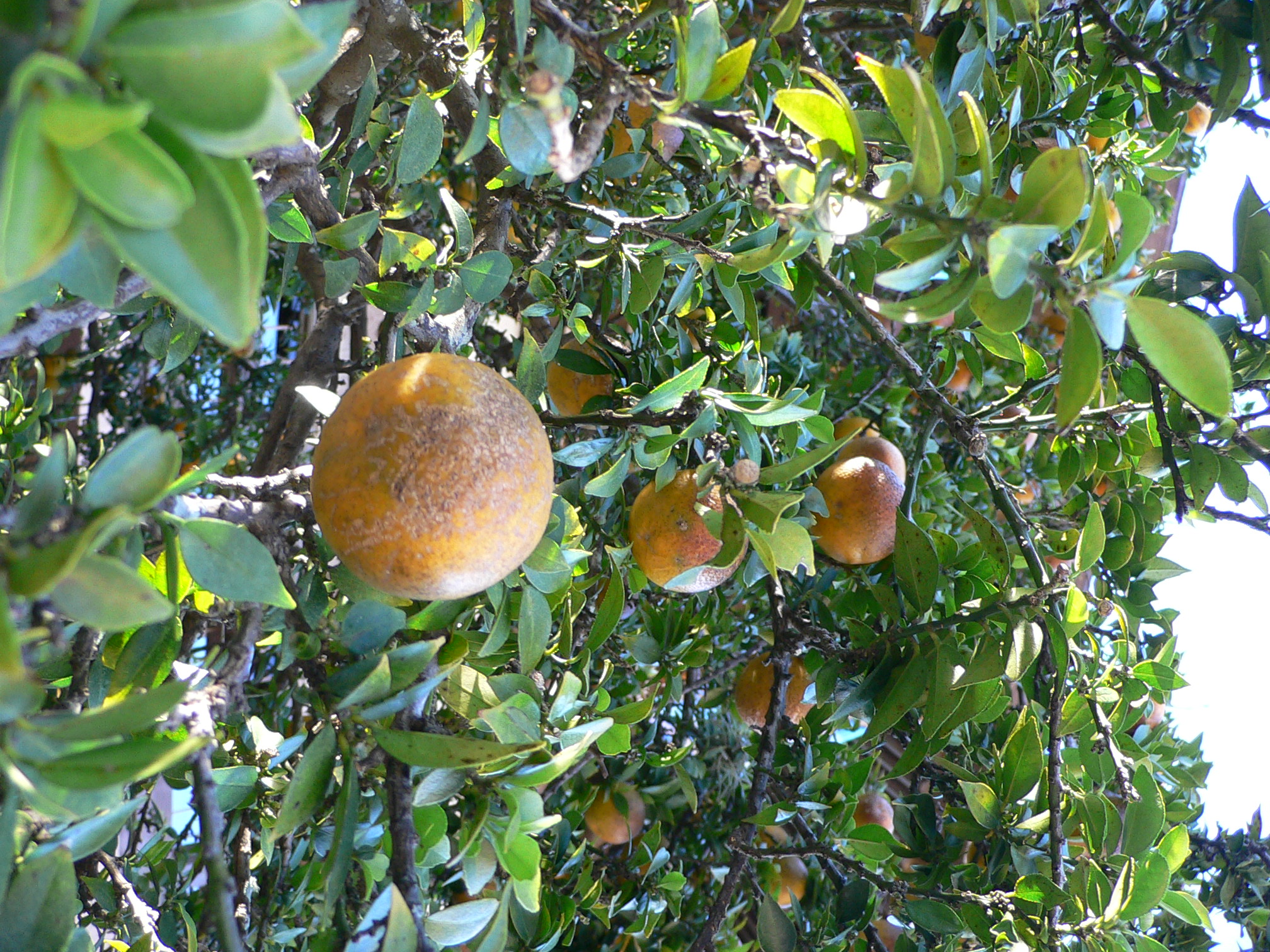- Chinotto
taxobox
name = Chinotto / Myrtle-leaved orange
image_caption = Chinotti growing on a tree
regnum =Plantae
unranked_divisio =Angiosperms
unranked_classis =Eudicots
unranked_ordo =Rosids
ordo =Sapindales
familia =Rutaceae
genus = "Citrus "
species = "C. aurantium"
binomial = "Citrus aurantium"
binomial_authority = var. myrtifolia (Ker-Gawl)|The Audio|chinotto.ogg|chinotto (pronounced [IPA|kiˈnɔtto] , roughly "key-NAWT-toe") is a small bitter
citrus fruit from the chinotto, or "myrtle-leaved" orange tree ("Citrus aurantium var. myrtifolia"). The tree grows to a height of 3m and can be found inLiguria ,Tuscany ,Sicily andCalabria regions ofItaly . The chinotto is an essential flavor component of most Italian bitter "amari"digestif s, and of the popularCampari liqueur.The name "chinotto" is derived from "China", from where the tree was thought to originate. [ [http://www.garzantilinguistica.it Garzanti Linguistica website it] ]
Chinotto drinks
Chinotto is a non-alcoholic drink produced from the juice of the
Citrus myrtifolia fruit (called "Chinotto" in Italian) and other herb extracts and aromatics. It is dark in colour and the appearance is similar to that ofCoca-Cola , but Chinotto's taste has more of a dry flavour. One of its unique attributes is that it tastes bitter and sweet at the same time. It is most commonly consumed before meals because it opens the palate in order to eat more food during a meal. Its bitter/sweet taste is sometimes described as similar toCampari .Chinotto soda dates back to the 1950s, and is produced locally in Italy by different small producers. It is predominantly consumed in Italy and
Malta , but recentlySan Pellegrino , thecarbonated water company, has started mass production and export in collaboration withNestlé , with the brand name "Chinò", andCoca-Cola produces it under the brand nameFanta Chinotto.The origin of Chinotto are unclear. San Pellegrino claims to have invented Chinotto in 1932, and Neri (Capranica Viterbo) claimed to have made and marketed Chinotto first in 1949. Another famous historical Chinotto brand was Recoaro, which was the best-selling Chinotto in the 1950s.
Similar Chinotto-like drinks are manufactured in countries outside Italy. For example,
Kinnie is a Chinotto-like soft drink made inMalta .Chinotto is also fairly common in Italian immigrant communities worldwide. There are local versions of the drink in certain communities, for example the Brio brand of Canada. In Australia, Chinotto is also sold under the Bisleri brand (owned by
Coca-Cola Amatil ) and is available in most supermarkets and many Italian restaurants.In
Venezuela , a popular lemon-lime soda is sold under the brand Chinotto, also owned by The Coca-Cola Company.See also
*
Kinnie External links
* [http://www.agraria.org/coltivazioniarboree/chinotto.jpgwww.agraria.org] Better photo of fruit and flowers
* [http://www.cpenti.it/chinotto Cpenti's chinotto website] Information about Chinotto it icon.
* [http://www.kinnie.it Kinnie]References
Wikimedia Foundation. 2010.
